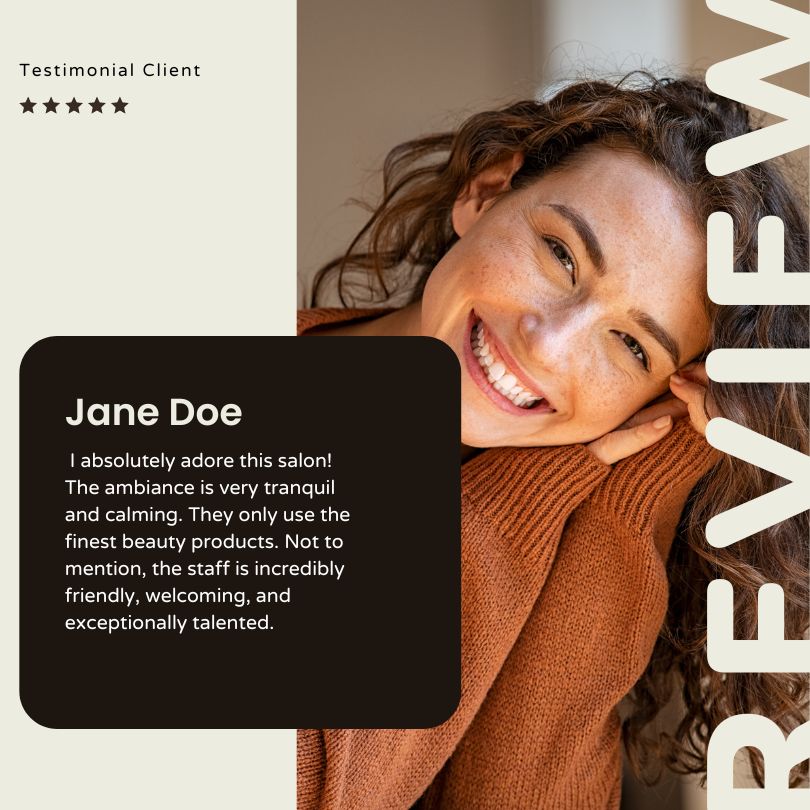
Hair and Beauty Salon Business Plan Guide: Achieve Success in 2025
The beauty and wellness industry is experiencing unprecedented growth, with the global market size projected to grow from $1610.5 billion in 2023 to $2765.8 billion by 2030, a CAGR of 8.03%.
However, just because it’s a lucrative and growing industry doesn’t mean you are guaranteed success by opening a new beauty and hair salon. You’ll need meticulous planning and careful execution, and this is where having a well-written business plan could help.
In this guide, we’ll cover how to write a comprehensive business plan for your hair and beauty salon. Whether you are a seasoned beautician itching to open your own beauty salon or a passionate entrepreneur looking to enter this lucrative beauty industry, this guide will help you.
Think of this guide as your trusty roadmap to success, where we’ll cover:
- The basic structure of a beauty and hair salon business plan
- Outlines for key sections in a business plan, from executive summary to market analysis to financial plan, and more.
- Actionable tips to optimize your business plan.
Without further ado, let’s embark on this journey of building a thriving salon business that is truly your own.
Demystifying Business Plan: Why Your Hair Salon Needs One
A business plan is a written document that outlines your business idea, how you plan to execute it, and the resources you need to achieve the business’s objectives.
A business plan is crucial for both internal and external purposes, acting as a roadmap or blueprint for three different aspects of your business:
- Business concept: The business plan outlines your business’s vision, mission, and values, establishing what your business is about and its core principles.
- Business offers: Detailing your products and services, your target market, and competitive landscape. It outlines what your business is offering, to whom, and how you plan to stand out.
- Business operations: Laying out your operations, marketing, and financial strategies. The business plan explains how you plan to run the business day-to-day, reach and attract customers, and achieve financial sustainability.
The Importance of Having a Business Plan
Isn’t writing a business plan just a formality? Do I really need to write one?
In fact, a business plan can offer so many benefits for your business, and here are just a few examples:
- Clarity and focus: Writing a business plan helps you think through your business idea thoroughly. It allows you to identify potential issues before they arise and refine your ideas before the actual launch.
- Communication and persuasion: With your business plan, you can communicate your vision, goals and business idea to partners, your own team, lenders, and investors. A well-written business plan demonstrates your professionalism and seriousness, building trust and credibility.

- Roadmap and compass: Your business plan offers a step-by-step roadmap for turning your hair salon from a mere idea into reality—and eventually a successful enterprise. The business plan keeps you on track, helps you make informed decisions, and makes adjustments/improvements as needed.
- Performance measurement: The business plan serves as a benchmark for tracking your business’s progress against its objectives and measuring your success. It allows you to compare your beauty salon’s performance against your projections, identify issues and inefficiencies, and improve accordingly.
- Increased funding potential: A well-crafted business plan can significantly help in securing funding from lenders or external investors. The business plan demonstrates your business’s feasibility, reduces potential investors/lenders’ risks, and establishes your credibility.
A business plan is not just a document but an important investment for your business’s success. While writing your business plan may take substantial effort and time, the long-term benefits it will produce shouldn’t be overstated.
If you are considering starting a beauty or hair salon business, don’t underestimate the importance of a well-written business plan.
Basic Structure for a Hair Salon Business Plan
Before we delve into the process of actually writing the business plan, let’s first explore the basic structure of a typical business plan.
While there’s no fixed, rigid structure for a business plan—including for a beauty and hair salon, most follow this framework:
Executive Summary (1-2 pages)
A concise overview (summary) of the entire business plan. Typically written last after the whole business plan is done, highlighting the following key points:
- Business concept and mission
- Target market and competitive advantage
- Financial projections and funding needs
- Management team and experience

Company Overview (1-2 pages)
A descriptive introduction of your beauty and hair salon business, discussing the following information:
- Business name
- Legal structure
- Location and facilities
- Brief history
- Vision and mission statement
- Services and products offered
- Unique selling proposition (USP)
Market Analysis (2-3 pages)
Overview of the hair and beauty industry in the region:
- Market size
- Market trends
- Growth potential
- Local competition analysis

- SWOT (Strengths, Weaknesses, Opportunities, Threats) analysis
- Target market identification (demographics, psychographics, hair/beauty needs.)
- Segmentation for targeted marketing and service offerings
Services & Competitive Advantage (2-3 pages)
-
- Detailed description of salon services: List the specific hair and beauty services (and products) you offer. Categorize them into tiers or packages to enable upselling and for convenience. Highlight unique offerings or specialized treatments.
-
- Unique selling proposition (UVP): Define your unique selling proposition (USP): what makes your services or products unique, and why should your clients choose you over your competitors? Your USP can be cutting-edge technology, experienced/famous stylists, a focus on sustainability, competitive pricing, etc.
-
- Pricing strategy and rationale: Develop a pricing strategy while considering your costs, target audience, and the competition.
-
- Special promotions or packages: Consider offering flexible options like loyalty programs, group discounts, or memberships.
-
- Future service expansion plans: Describe the services and products you are planning to offer in the near future.
Marketing & Brand Strategy (2-3 pages)
- Target market positioning: Explain who your target audience is

- Brand identity:
-
-
- Logo, tagline, and messaging that resonates with your target audience
- Consistent visual communication across channels
-
- Marketing channels:
-
-
- Online: Website, social media, Google Ads, YouTube channel, review sites, etc.
-
-
-
- Offline: Local print media, community events, partnerships, etc.
-
- Advertising and promotional strategies: Opening promotions, influencer collaborations, exceptional customer service, etc.
- Sales tactics and customer retention plans: Discounts, referral programs, loyalty programs/memberships, etc.
Operations & Management (2-3 pages)
- Salon layout and design:
-
-
- Functionality
- Aesthetics approach
- Brand alignment
- Traffic flow
- Equipment placement
- Employee facilities (i.e., break room)
-
- Ownership structure and key management personnel:
-
-
- Roles and responsibilities of management personnel
- Management team’s industry experience and qualifications
-
- Hiring plan and personal development: Your plan for hiring qualified staff (stylists, technicians, receptionists, etc.) and facilitating ongoing training.
- Technology integration: Staff management software, point-of-sale systems, inventory management tools, online appointment scheduling.
Financial Projections & Funding (2-3 pages)
- A detailed breakdown of startup cost and funding required:
-
-
- Rent
- Equipment supplies
- Employee salaries and benefits
- Marketing
- Realistic contingency funds for potential fluctuations
-

- Revenue forecasts: Discuss different scenarios while considering potential changes in demand. Base your forecasts on your target market, market research results, and service/product pricing.
-
-
- Sales forecasts
- Expense forecasts
- Cash flow projections
- Break-even analysis
-
- Funding options (if seeking external investment)
Appendix (2-3 pages)
- Any additional documents supporting the business plan (resumes, market research data, etc.)
- Images or renderings of the salon layout (if applicable)
- Any legal or licensing documentation
This overview of the business plan sections is just the beginning, and below, we will have in-depth discussions for each section.
Let’s begin with the first and arguably the most important section of the business plan: the executive summary.
In-Depth Breakdown of Business Plan Sections
1. Executive Summary
The executive summary of your business plan is like a trailer for a movie – it needs to be attractive and captivating so it can hook readers in the first few paragraphs and leave them wanting more.
Not always, but typically, it’s better to write the executive summary section last once the rest of the business plan has been fleshed out. This allows the executive summary to accurately reflect the final and whole details of the business plan.

The section should be relatively short (Not more than 1-2 pages in most cases, unless your business plan is especially long,) and should cover these crucial sections:
- Company Introduction: Briefly introduce your hair and beauty salon’s concept; its name, location, and unique selling proposition (USP.) Highlights what sets the salon apart from your competitors.
- Mission Statement: Include a clear and concise mission statement that communicates your salon’s objectives and core values. You should clearly convey the purpose and vision of the business in the executive summary.
- Business Goals and Objectives: Summarize the key objectives and goals of the salon business. This could include revenue targets, specific milestones you are aiming to achieve, expansion plans, etc.
- Target market: Describe the current beauty and hair industry in your local area, and outline the target demographic for the salon’s services. Define your ideal customer base (demographics, psychographics, lifestyle, needs, etc.) Emphasize the potential demand for a hair/beauty salon within your target audience.

- Services, Products, and Competitive Advantage: Briefly list the hair and beauty services you offer and categorize your clarity. Also, showcase the products you are trying to sell within the salon (i.e., hair products, skincare products, etc.) Showcase your USP again to emphasize what makes your service unique and attractive, and mention any memberships or special packages you offer.
- Ownership and Management: Provide a brief overview of your business’s ownership structure and key management personnel. Emphasize your team’s relevant expertise and experience in the industry.
- Financial Summary: A high-level overview of your business’s projected revenue and key financial metrics. Mention your funding requirements and potential sources (i.e., personal savings, investors, loans.) Try to convey confidence in your business’s growth potential and financial viability.
- Future Plans: (Optional) Brief overview of any future expansion plans or any future initiatives your business may undertake. This showcases the business’s growth potential, which can help convey your credibility.
- Call to Action: Conclude the executive summary by encouraging readers to take the next step (reading the full plan, visiting your website, contacting you for further details, etc.)
Below are some tips you can use for writing an effective executive summary:
- Keep it short: In most cases, the executive summary should not be more than 1 or 2 pages. Potential investors/lenders and stakeholders usually have limited time, so appreciate their time with a concise summary that captures the essence of your business plan. If your business plan is long or complex, then a lightly longer summary (up to 3 pages) might be justified. Yet, always prioritize conciseness and avoid including unnecessary information.
- Use clear and concise language: Avoid jargon and technical terms unless they are absolutely necessary.
- Proofread: Make sure the executive summary is free of grammatical errors and typos. Even a single mistake can make you look unprofessional.
- Focus on the most important information: Highlight your business’s key strengths and competitive advantages and convey your credibility. Again, focus on conciseness.
Remember that the executive summary is a very important part of the business plan. Take the time and effort to write it carefully.
2. Company Overview
Your company overview section should act as the spotlight for your beauty/hair salon in the business plan.
In this section, you should communicate what your salon is about, showcase your unique personality, and convince the readers that you’re not just another salon.

Here are some actionable tips on how to write an effective company overview section:
Capture attention with a compelling story:
Start with a captivating statement that conveys what your salon is about. To support it, share an anecdote about a client’s transformation or a brief history of how you started this salon.
Draw your reader’s attention with the human touch, and consider highlighting a unique aspect of your business, such as a commitment to sustainability or an interesting signature service.
Paint a picture of your unique identity:
Convey that your salon is not just another business but a unique personality with a story to tell.
Communicate your brand’s unique identity: are you eco-conscious? Is your salon sleek and modern? Use evocative language to paint a picture and create a mental image. Show, don’t tell. Instead of simply saying “excellent customer service,” paint a picture of how your beauticians go the extra mile to create a client’s dream wedding day.
This is where good copywriting can help, and if necessary, consider hiring professional help.
Define your “why”:
What drives your salon on top of making money?
It’s critical to articulate your core values: are you trying to champion sustainable beauty? Is it about empowering clients to embrace their true beauty? How are you trying to make a difference?

The better you communicate your “why” and show that your salon is more than just the money, the better you can keep your readers engaged.
Highlight your salon’s unique selling points
Showcase what makes your salon stand out from your competitors. This can be:
- Cutting-edge technology (VR consultations, scalp massaging robots, etc.)
- Eco-friendly practices
- Specialized services not offered by your competitors
- A team of experienced stylists/beauticians
- A commitment to customer satisfaction
Or others.
Whatever your unique selling proposition (USP) is, communicate it loud and clear.
Keep it short:
Just like the executive summary section, keep this overview section short, concise, but impactful. Remember that today, attention spans are precious, so leave the details for later sections.
Spice it up with visuals:
Include attractive photos and images that reflect your brand. Use your salon’s logo design and brand colors if possible.
Highlight success stories or testimonials:
If applicable, share client testimonials or success stories. Testimonials from satisfied clients can help add social proof and emotional resonance, creating trust and confidence in your salon’s credibility.

Remember that your company overview’s function is to grab attention and ignite interest. So, on top of making it informative, try to infuse the company overview with creativity, passion, and personality.
3. Market analysis
The market analysis section for your beauty and hair salon business plan is critical so readers can understand your industry, potential clients, and competitors.
Yet, this section shouldn’t be just about combing through statistics. Rather, it’s about uncovering the opportunities your business can explore, identifying potential pitfalls, and crafting an effective strategy to guide your salon to success.
Knowing your industry landscape
Start this section by providing a brief overview of the global beauty and hair industry. What is the size and growth potential? How is the industry playing out in your local region? Highlight trends, growth patterns, and any recent developments to establish your salon’s place in the larger industry landscape.
Identify target audience
Zoom in on your ideal clientele.
Who are your salon’s ideal customers? Consider factors like age, gender, income level, etc., and then go even deeper. Define their wants, needs, hobbies, magazines they read, their Instagram aesthetics, and so on.

The better you understand your target audience, the better you can create a salon and craft services they’ll crave.
Competitive analysis
Identify your direct and indirect competitors: big and small salons in your area. Analyze their strengths and weaknesses, the services they excel at, their pricing strategy, etc.
Understanding your competition can help you discover gaps and opportunities. Try to learn from their mistakes, imitate their successes, and find areas you can improve upon.
Keeping up with the trends
Discuss what’s currently hot and not hot in the hair and beauty landscape. Are clients now avoiding chemicals in their hair treatments? Is balayage still trending in your area? Try to predict upcoming trends and communicate your future plan in this section. This can allow your salon to stay ahead of the curve and even make it the trendiest in town.
Avoid technical jargon
When communicating trends and statistics, use clear and relatable language. Try to make it as easy as possible for your readers to understand your analysis.
Visualize your findings
Use diagrams, charts, graphs, and mood boards to bring your data to life. This can make your business plan more engaging, keeping them reading.
Support with evidence
Try to support any claims with evidence. Cite industry reports, local surveys, or even observational data whenever possible.
Take the time to craft an insightful and thorough market analysis section.
Don’t just present data, but explain how the findings impact your salon business’s offerings and overall strategy.
4. Services and Competitive Advantage
This section is where you showcase the services and products your salon will offer, complete with unique value propositions (USPs) and pricing strategy.
Here are some actionable tips to make this section compelling:
Accurate, comprehensive, but attractive
You’ll want to present a detailed and structured list of services (and complementary products) that your salon offers: from standard haircuts to coloring to spa treatments. However, don’t just list everything and make it boring.
Try painting a picture by describing your services with evocative language, but don’t overdo it. Give details about your procedures, the products used in each treatment, and the benefits they’ll provide. Speak your target audience’s language and use references they understand.
Make sure readers and potential clients can understand the full spectrum of your offerings. If you have statistics on client satisfaction or awards won, don’t hesitate to showcase them so you can quantify your advantages.
Use high-quality visuals
Include photos and videos showcasing your clients’ transformation and your unique techniques in action.
Highlight your unique/specialty offers
What makes your salon unique? Find the specialty/unique services that set your salon apart. Do you specialize in hair extensions? Or do you offer vegan hair coloring services with exotic color choices? Do you have exclusive product lines or specialized techniques?
Your unique offers can also extend beyond your products or services. Do you boast a team of experienced stylists or beauticians? Or do you offer a VR consultation experience that lets clients preview their new hairstyle?
Embrace what makes your salon and your offerings special.
Packages and bundles
Bundle your services into enticing packages that provide added value. These bundles and packages won’t only encourage clients to explore more service varieties but will also provide you with opportunities for upselling.

This section is your chance to communicate the benefits of your salon’s offerings. Take the time to create an accurate, immersive, and engaging description, and highlight what makes your services and products truly special. Infuse your competitive edge with passion and personality, so you’ll have a section that is downright enchanting.
5. Marketing and Brand Strategy
This section will discuss how you plan to attract and retain clients, and it should go beyond how you plan to promote your salon.
Here are some tips to optimize this section:
Define and communicate your brand personality
Define your “it” factor, your salon’s brand identity and personality. What values does your salon represent? Are you a bold, avant-garde salon? Or the eco-conscious one? Being consistent in voicing your personality is important so you can attract the right audience.
Create a brand style guide to maintain consistency. Define your logo, fonts, brand color palette, and tone of voice, and use them across all channels.
Mix-and-match channels
Don’t limit yourself to traditional channels like magazine ads, billboards, and flyers alone, but explore the various online and offline channels available today:
- Digital channels:
- Social media: A must-have channel for virtually any business in today’s world. Choose the social media platforms your potential clientele frequents (TikTok, Instagram, X, etc.) and regularly post engaging content on these platforms. You can, for example, post before-and-after photos, hairstyle tutorials, tips and tricks, behind-the-scenes glimpses, and client testimonials.
-
-
- Digital ads: Consider investing in targeted online ads on social media, search engines, and other relevant websites to reach a wider audience faster.
-
- Online booking and appointment scheduling: Make it easy for clients to book appointments online, 24/7. Consider using a booking software like Bookeo that integrates with your website to create a seamless booking experience for your salon.

- Email marketing: Don’t underestimate the power of email marketing, even with the newer and more advanced channels available. Build an email list and segment your list for targeted messaging and personalized offers. Regularly send newsletters with new service announcements, special offers/discounts, and beauty/hair care tips.
-
-
- Search engine optimization (SEO): Optimize your website for relevant keywords so that potential clients can find you easily when searching for salons in your area.
-
- Influencer marketing: Partner with relevant beauty influencers in your area so they can promote your salon to their followers. Choose influencers whose audience and style/personality/values align with your brand.
- Traditional channels:
- PR: Don’t underestimate traditional public relations. Get featured in local newspapers, magazines, and relevant blogs/websites. Host or sponsor events (i.e., local charity) to increase brand awareness.
- Print marketing: Flyers, brochures, magazine ads, and even business cards can still be effective. Use them in high-traffic areas like office buildings, busy coffee shops, gyms, etc.
- Partnerships and collaborations: Team up with other non-competing local businesses (restaurants, coffee shops, gyms, clothing stores, beauty boutiques, etc.) to reach new audiences and offer cross-promotions.
-
- Loyalty programs: Reward your repeat customers with special discounts, early access to new services, or exclusive events. Create a sense of community and appreciation for their loyalty.
- Word-of-mouth marketing: Encourage your satisfied clients to refer your salon to their friends and family. Offer referral bonuses or rewards programs to incentivize them.
Offer compelling promotions
Early bird discounts, loyalty programs, and referral bonuses can attract new clients and keep existing ones coming back for more.
Track your results
Analyze your marketing efforts to see what’s working and what needs tweaking. Don’t be afraid to experiment and adjust your strategy.
6. Operations and Management
The operations and management section of your hair and beauty salon business plan should be more than just a schedule, calendars, and to-do list. Instead, it should be a functional blueprint for your business’s backstage – allowing your salon to operate efficiently.
Consider:
Clear organizational structure
Open this section by outlining the organizational structure of your salon. Mention key management personnel, clearly define roles and responsibilities, and highlight their experience and expertise. Showcase your team’s capabilities and credibility.
Training programs and development plans
Highlight any ongoing training programs for your management and team. Emphasize the importance of continuous training and education so your team can stay updated on the latest trends, products, and techniques in the beauty industry.

Show your commitment to continuous improvement by outlining how you will invest in your team’s development.
Leverage technology
Describe the tools, software, and systems you’ll use to streamline your salon’s operations, for example:
- Online booking and scheduling system
- Point of sale system
- Inventory management tools
- Customer relationship management (CRM) tools
- Marketing tools
And so on.
Explain how you are going to use these tools in easy-to-understand language and emphasize how they’ll benefit both your staff and your clients.
Policies and procedures
Clearly articulate your salon’s policies and procedures in various aspects: staff scheduling, appointment management, cancellation policies, client consultations, hygiene policies, and so on.
7. Financial Projections and Funding
This section’s objective is to showcase your salon’s financial viability and sustainability. To achieve this, consider the following tips:
Clear financial projection
Start this section by charting your financial course. Forecast your salon’s revenue, product sales, and any other income streams while considering factors like emerging trends, seasonal variations, etc. Be ambitious but realistic. Provide a clear rationale for your projections and estimates, and use benchmarks and data to guide your estimations.
Map out your expense
Provide a comprehensive breakdown of your salon’s essential costs. This should encompass fixed costs (rent, utilities, salaries) and variable costs (product inventory, marketing, maintenance). Be thorough, and don’t forget details like insurance and maintenance. Demonstrate a thorough understanding of your salon’s cost structure, and maintain transparency.

Accurate profit and loss statement
Include a profit and loss (P&L) statement that summarizes your salon’s revenues, costs, and expenses over a specific period, giving a clear picture of your salon’s finances.
Consider optimistic, moderate, and pessimistic scenarios to demonstrate your understanding of potential risks and rewards.
Funding details
If you are seeking funding, be specific. Clearly explain how much you need, what you are planning to do with the money, and how you’ll repay the investment. Specify the amount of money needed to launch and run the salon until it becomes profitable.
Explore potential funding sources (loans, investors, grants, personal savings, etc. Clearly define how much funding you’re seeking from each source and the terms of the investment or loan.
Remember that the objective of this section is not just solely about numbers but about convincing readers about your salon’s financial sustainability and growth. Clearly illustrate your salon’s path from startup to profitability with a well-crafted narrative.
8. Appendix
The appendix section of the business plan shouldn’t be treated as a mere formality, but it can be very useful for providing supporting documents to establish your salon’s credibility:
- Visual elements: Include visual elements that complement your business plan, like photos of your salon’s interior, stylist’s bio and portfolio, mood boards, videos of your client’s transformation, and any other visual elements that can add depth to your narrative.
- Case studies and testimonials: If you have detailed testimonials or success stories that didn’t fit into the main document, you can showcase them in the appendix.
- Sample marketing materials: Incorporate sample marketing materials, including business cards, advertising design, mock-ups of brochures, etc. Showcasing these materials may help stakeholders visualize your salon’s feel and overall strategies.
- Vendor and supplier agreements: If necessary, incorporate copies of important supplier and vendor agreements that contribute to your salon’s day-to-day operations.
- Licensing and permits: Attach copies of relevant permits and licenses. This can be useful for providing tangible evidence of your salon’s compliance with relevant regulations, adding a layer of credibility.
- Survey and research data: Include the detailed analysis results (i.e., survey results, industry trend statistics, competitor’s data, etc.) in the appendix section if possible.
- Financial models: Attach detailed financial models, scenario planning, sensitivity analyses, etc.
When writing and structuring your appendix section, try to make it easy for readers to reference specific documents by keeping the list organized and clearly labeling each document.
Conclusion
So, there you have it!
Above, we have discussed the actionable tips and strategies on how to write the different sections of a hair and beauty salon business plan. We’ve also explored various elements of the planning process, from conducting a thorough market analysis to crafting a robust financial projection and beyond.
As you venture into the world of salon entrepreneurship, let Bookeo be your partner in streamlining your day-to-day operations and elevating the client experience. Visit Bookeo today and discover how appointment scheduling can fuel your salon’s success.
